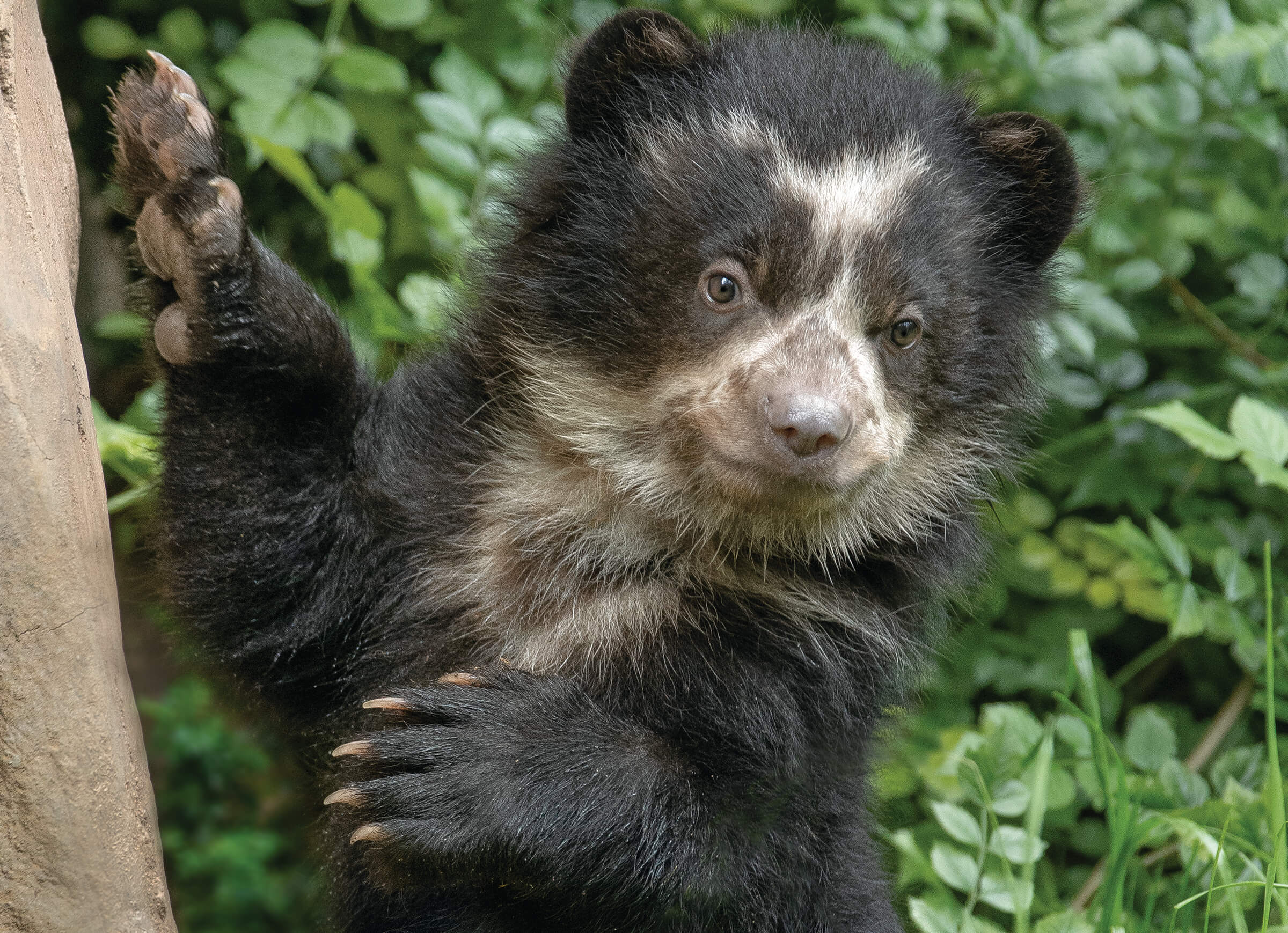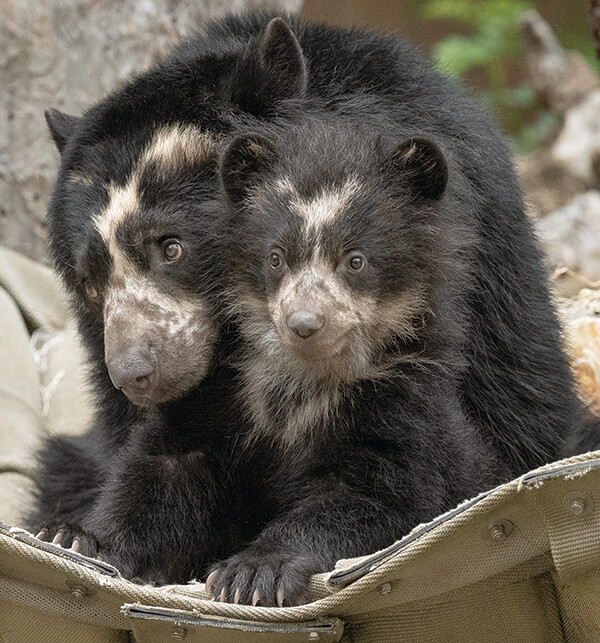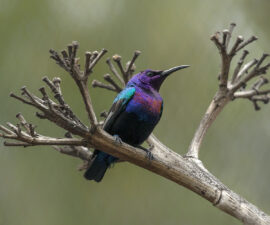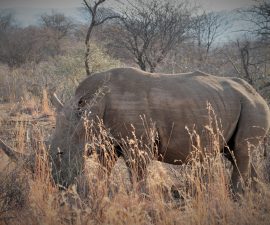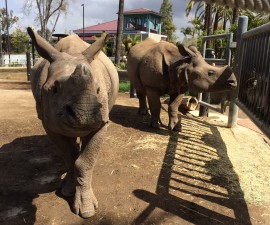BY Peggy Scott
Photography by Ken Bohn
In the early morning hours of January 8, 2020, Andean bear Alba gave birth to her first cub—the first of this species born at the Zoo since 1993. The wildlife care specialists working with Alba knew she was expecting, so they were keeping an extra-close eye on her. One of those specialists, Hali O’Connor, says that Alba had been building her nest and paying a lot of attention to her den—like she knew she would need it soon.
Alba’s den was fitted with a closed-circuit camera and microphone, so when the care team reviewed overnight footage, they could listen for the sounds of a newborn. During the replay viewing on January 8, they saw Alba cuddling something to her chest and heard little noises. Sure enough—she had a tiny cub! The care team was excited but cautious, as the mortality rate for Andean bear cubs in their first month is high. But as the cub continued to grow under Alba’s care, it was time to celebrate.
Alba’s “Beloved” Cub
 Rings of white or light fur around their eyes give these bears their other common name—the spectacled bear.
Rings of white or light fur around their eyes give these bears their other common name—the spectacled bear.
In late April, Alba allowed the care team enough time for a quick exam of the cub, and they discovered that he is male. He was named Agapito, which means “beloved.” Hali says Alba is a great mother and pays close attention to him. “We are overjoyed about the birth of Alba’s first cub,” says Chris Hamlin, wildlife care manager. “Alba is showing all the appropriate behaviors and being very attentive. We are so impressed with how well she is handling motherhood.”
At first, Alba was a little bit of a “helicopter mom,” watching the cub’s every move. As he got older, and a little bigger, Alba began letting him wander a bit. Hali says Agapito is an adventurous cub, exploring and putting everything in his mouth, much like a human toddler. He copies his mom, including helping her to gather bedding. He loves water, and is learning about different types of food. He’s still nursing, but the cub has been observed handling whole fish, yams, carrots, and fruits. Like both of his parents, Agapito is particularly fond of jicama and avocado. His most recently acquired food skill? He has figured out how to shell peanuts, and is doing a fair amount of independent foraging for foods.
By six months of age, Auggie, as he is affectionately nicknamed, was conquering Alba’s swing, playing with enrichment items, and exploring his habitat. The care team helps him with his development by adding moving elements to the area, like a hanging horizontal log that wobbles, and a bridge made from fire hose, to encourage the cub to use different muscles and practice his climbing skills. “He’s quite brave,“ Hali says, adding that Alba’s calm demeanor seems to provide moral support. Should something startle him, however, he makes a beeline for the safety of Alba. It’s not very long, though, until he’s ready to try something else.
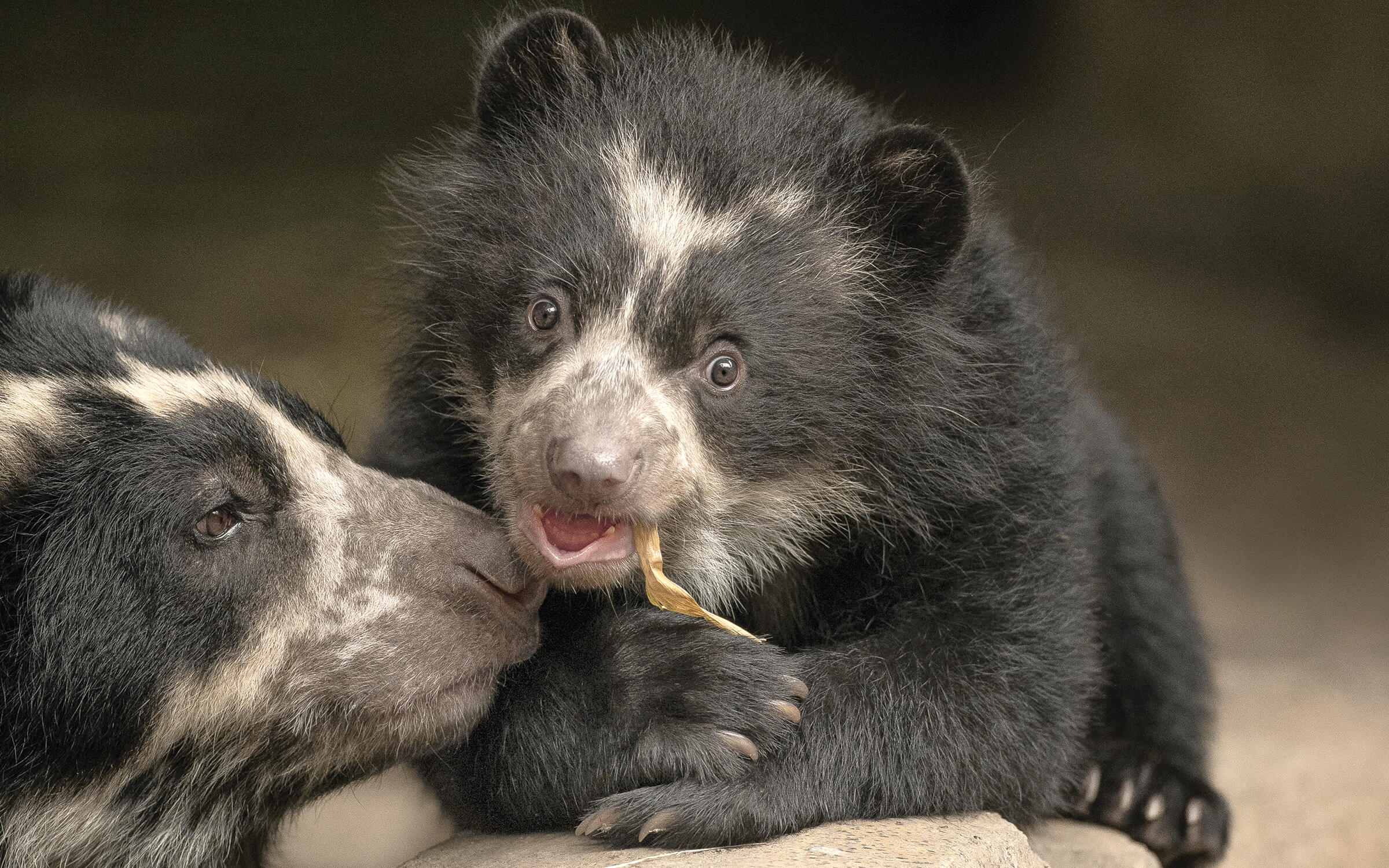
Family Discussions
Hali notes that these bears seem to have a lot to say, and Auggie “talks” by humming, groaning, and cooing loudly. Alba coos back—they seem to have long conversations. The groaning seems to express impatience, Hali says. Auggie seems to use it when he wants to get into the main habitat to explore after enrichment items have been distributed or the habitat has been cleaned.
The cub sees his dad, Turbo, through a viewing window. Occasionally Alba brings Agapito to show him to Turbo through the visiting panel, which has openings so the bears can see and smell each other. Alba is still protective, and she “huffs” at Turbo to tell him he needs to mind his manners. She knows the panel keeps them separate, so she allows some visitation.
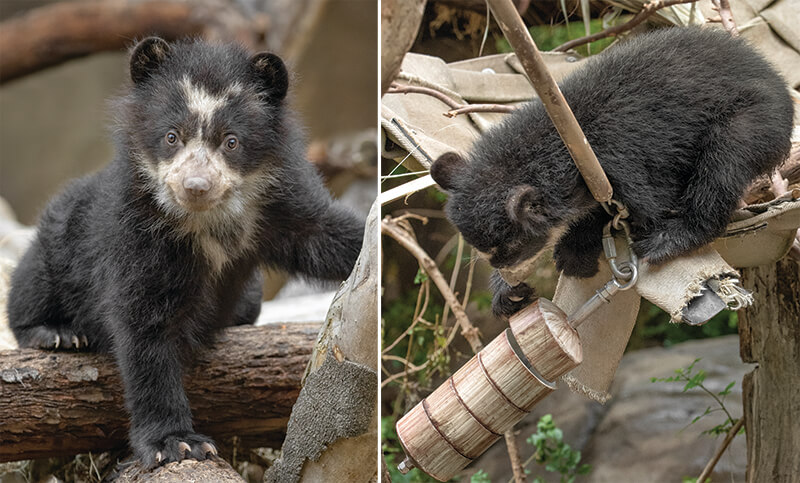
ONE BUSY BEAR
Climbing is one of Agapito’s favorite pastimes, whether that involves manuevering piles of logs on the ground or any of the suspended structures in his habitat.
For a particularly stimulating enrichment experience, the care team occasionally swaps bear habitats, allowing Alba and Agapito to hang out in Turbo’s area, and Turbo to explore theirs. Everyone seems to really enjoy the different sights and smells, with considerable sniffing and stomping around. The wildlife care team is grateful to have the opportunity to watch these relationships grow—every day seems to bring a new revelation.
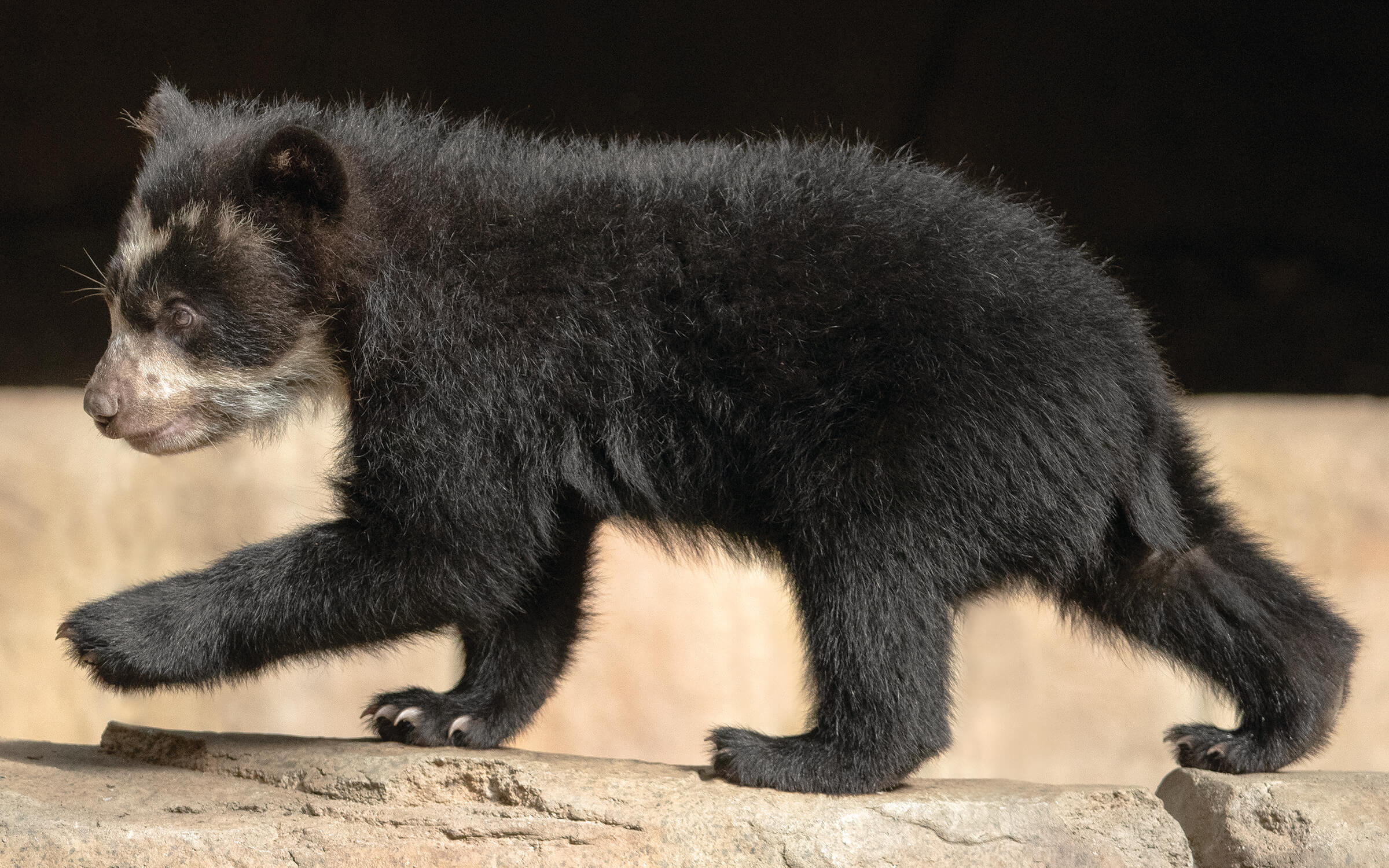
Gathering Andean Bear Secrets
Each of Agapito’s new experiences isn’t just a milestone for him—it might also provide insight into his species’ existence in South America. As he expands his world, Agapito’s growth is giving researchers who are dedicated to studying Andean bears some much-needed clues as to the day-to-day life of these bears in their native range.
Andean bears (also called spectacled bears) are good at hiding in their habitat in South America, and little is known about mother and cub interaction. “The Andean forests where we work are so rugged and dense that it will be a long time before we can study the maternal behavior of wild bears there,” says Russ Van Horn, Ph.D., scientist, Population Sustainability, San Diego Zoo Global, and co-chair of the International Union for Conservation of Nature’s Andean Bear Expert Team. “Alba’s behavior and her cub’s development will suggest how closely, and for how long, wild bear mothers and cubs may be linked to birth dens, where we think they’re sensitive to disturbance by humans.”
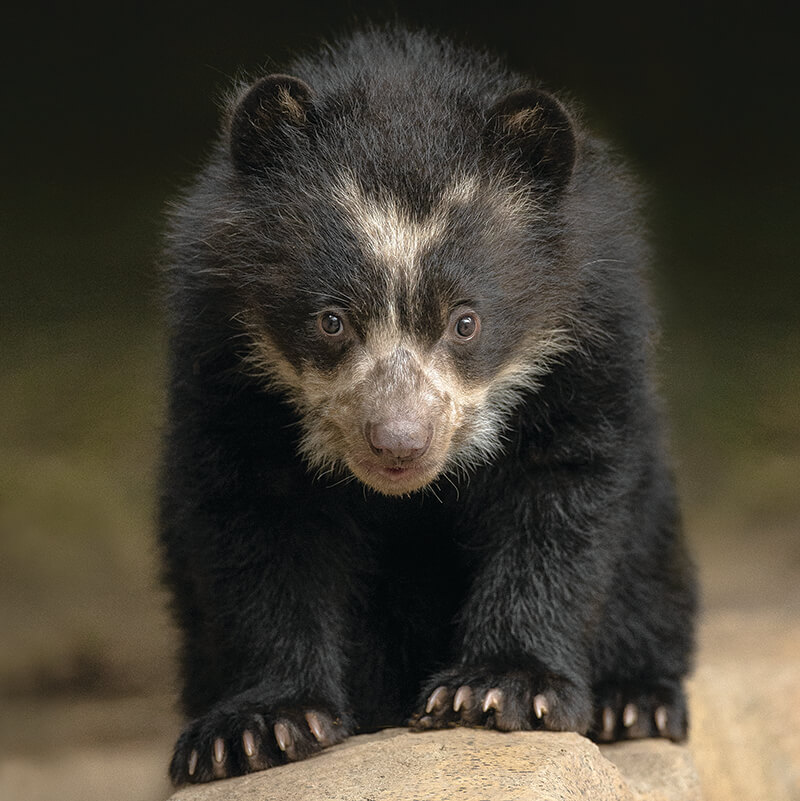
FURRY FRAMES
Even at just a few months of age, an Andean bear’s characteristic fur “spectacles” are visible around the eyes.
Habitat loss, fragmentation, and degradation, as well as poaching, are among the threats Andean bears face. In southeast Peru, our researchers work primarily in the cloud forest and other humid montane forests, where most Andean bears are thought to live. Together with conservation partners, our Population Sustainability team is documenting Andean bear presence and characterizing critical aspects of bear ecology and behavior, such as foraging, trail use, and marking.

SNACK ATTACK
Agapito learns about different foods by mimicking his mother, Alba. Yams, carrots, and fruits are among the items he might grab first. He has learned to forage for food on his own.
Their goals are to determine not only where these bears live, but also how they interact with their environment and the plants in their varied habitats. The team intends to dig deeper to better understand not just what bears eat, but what nutritional benefits they gain from their varied diet. Over time, they’ve realized how little is known about other mammals that also depend on these habitats, so what is being discovered through the fieldwork is being leveraged to benefit the conservation of other mammals in these Andean forests, as well.
By observing Alba and Agapito, our experts hope to learn about what goes on between a mother and her cub, and how this information can help conservation efforts in the Andean forests. Agapito is still a little bear—but he’s already helping Andean bears everywhere.

